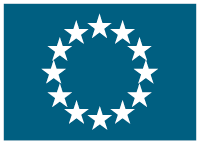Ecological and Economical Waste Immobilisation
(EWI)
Start date: Feb 1, 2004,
End date: Nov 30, 2006
PROJECT
FINISHED
Background
Effective, long-term disposal of waste is an on-going problem. Although sealing technologies used at landfill sites have lifespans of several decades, they carry significant environmental risks and incur high long-term maintenance costs.
This project sought to address these problems by using a technique known as diagenetic inertisation. Waste is mixed with a mineral compound to produce a compact material for depositing in landfill sites. This material is impervious to air and water and thus becomes inert. Furthermore, different types of waste can be treated as the compound can be formulated in different ways.
The technique also has the benefit of neutralising harmful substances; they combine with the fine-grained mineral particles of the compound. The effectiveness of diagenetic inertisation in other applications has been proved over several years of research and testing.
Objectives
The main objectives were to:
⢠Build a pilot plant and landfill site providing lasting security of waste with
low maintenance;
⢠Demonstrate the economic benefits of diagenetic inertisation;
⢠Create a detailed database to support the use of the technique; and
⢠Set ambitious technical standards for the landfill waste industry, contributing
to a cleaner environment for future generations.
Results
The pilot plant for immobilisation was not built and the project did not achieve its objective. However, the technology, diagenetic immobilisation, was demonstrated for selected types of waste. Its application can be endorsed for waste materials from biological-mechanical treatment at different stages of rotting process to ashes and different types of sludge. Other technologies, however, are likely to be more cost effective.
Difficulties in project management and a change of the beneficiaryâs management board led to the projectâs termination. The beneficiary no longer saw an economic advantage to the project.
